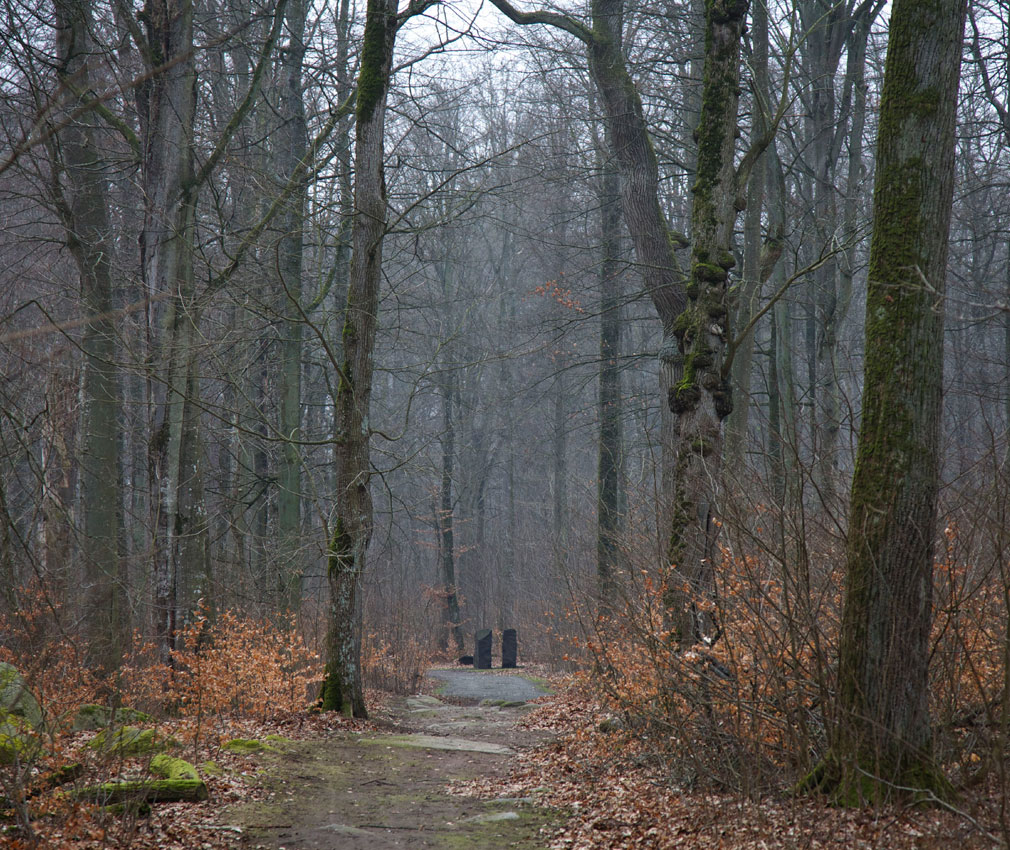
Birgitta Silfverhielm
(Född/Born 1960, verksam i/works in Stockholm)
Rum, 1994
Diabas/Diabase
160 x 160 x 150 cm
Deponerad av konstnären/Courtesy of the artist
Inre rum, 1996
Diabas/Diabase
140 x 75 x 25 cm
Deponerad av konstnären/Courtesy of the artist
For English please scroll down
Birgitta Silfverhielms två verk på Wanås kom till med ett par års mellanrum. Verken visades i samband med en utställning 1996, som presenterade sex nordiska konstnärer som arbetar i diabas. Den svarta stenen som bryts i närheten av Wanås intresserar många konstnärer. Det är en vulkanisk bergart, grå och sträv i sitt ursprungsskick, men djupsvart och blank när den poleras.
Det första verket, Rum från 1994, gjorde Silfverhielm som en del av sitt avgångsprojekt vid Kungliga Konsthögskolan i Stockholm. Ett stort diabasblock delades itu och en avbild av konstnärens egen kropp urholkades i stenen, så stor att hon själv skulle kunna få plats i den. Snittytan polerades slät. I samband med hennes avgångsutställning 1995 genomförde Silfverhielm performanceverket OM. Hon stängde in sig mellan de sex ton tunga stenblocken, som försattes med stålrullar för att kunna skjutas ihop. Under 20 minuter skapade hon erfarenheten av att få vara inuti en sten – och tryckte sig därefter ut genom att skjuta/rulla halvorna från varandra och ta sig ut ur gömstället.
Året därpå mottog Silfverhielm Östra Göinge kommuns stenstipendium och kunde skapa Inre rum. Verket är också av diabas och avbildar formen av det urholkade rummet inne i stenblocket. Skulpturen ligger på marken en bit ifrån Rum och har delats itu med snittytan polerad blank.
>>>
Birgitta Silfverhielm’s two works at Wanås came about with a couple of years between them. The works were shown in connection with an exhibition in 1996, which presented six Nordic artists who work in diabase. The black stone, which is found near Wanås, catches the attention of many artists. It is a volcanic stone, grey and rough in its natural condition, but deep black and glossy when it is polished.
Silfverhielm created the first work, Rum from 1994, as a part of her final project at the Royal Institute of Art in Stockholm. A large block of diabase was split in two, and the image of the artist’s own body was hollowed out of the stone, so that she could fit into it. In connection with her final exhibition in 1995, Silfverhielm carried out the performance OM. She closed herself in between the six-ton boulders, which were set on steel rollers, so they could be pushed together. For 20 minutes, she created the experience of being inside a stone, until she got out of her hiding place.
The following year, Silfverhielm was awarded the stone fellowship from Östra Göinge municipality, thereby allowing her to create Inre rum. This work is also made of diabase, and depicts the form of the hollowed-out space in the boulder. The sculpture lies split apart on the ground away from Rum, displaying the cut sides polished smooth.